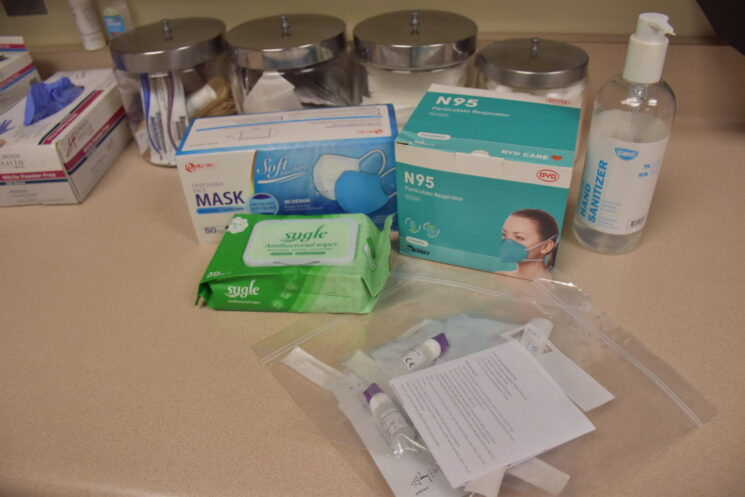
By Vy Nguyen
In October of last year, Governor Gavin Newsom declared that the COVID-19 State of Emergency will end in California by Feb. 28, 2023. Newsom’s announcement came after more than two years of statewide efforts to curb the spread of the virus. As California has just transitioned out of the State of Emergency, generous funding, flexible mandates and healthcare policies related to COVID-19 shifts away from norms set by the pandemic.
Though Newsom had extended the COVID-19 State of Emergency several times earlier, he cited the major drop in hospitalizations and deaths as cause to end the formalized emergency.
The time from Newsom’s announcement in October to the end of the state of emergency last month was intentional, as it allowed healthcare workers a 4-month gap to adjust before state aid ends.
The COVID-19 State of Emergency was an issue ordered by Newsom on March 4, 2020, following the abrupt rise of coronavirus cases in the US earlier in the year. Days after Newsom’s announcement, the World Health Organization declared COVID-19 a national pandemic.
In general, a State of Emergency occurs when the governor perceives that a severe disaster or incident has occurred and requires state aid or additional resources. In particular, the 1970 California Emergency Service Act grants the governor authority to form new orders or amend and revoke state ones, while re-distributing state funding towards emergency aid.
For COVID-19, the State of Emergency loosened prior state regulations and enabled Newsom to create over 70 executive orders.
Included in the orders were Newsom’s policies for masking and vaccinations, while providing increased funds for COVID-19 testing and personal protective equipment (PPE). In total, about twelve billion dollars went into Newsom’s plan for the pandemic.
For medical workers, the mandates formed key practices seen during the pandemic, such as improved telehealth services and abundant PPE, including millions of N95 masks.
Dubbed the “Medi-Cal freeze,” the orders allowed more generous Medi-Cal policies that gave individuals easier access to healthcare during the pandemic. Other policies also gave out-of-state healthcare workers the ability to assist in California facilities and expanded frontline workers’ scope of responsibility.
In addition, a key change has been “space waivers” within hospitals, which allowed hospitals to make makeshift beds that temporarily accommodated the number of patients. By today, this is no longer expected to be the case.
As the pandemic progressed and infection rates improved, more executive orders were removed. In early 2023, about only 25 orders remained.
Since Feb. 28 has passed, certain workplace privileges granted for COVID-19 have ceased. Even prior to the end of the state emergency, some benefits have already stopped for teachers at Fountain Valley High School (FVHS).
“Part of what’s happened already is that teachers are no longer [allowed] to have COVID leave, even if they test positive,” Principal Paul Lopez said.
Though the COVID state of emergency has recently ended, COVID-19 restrictions are expected to shift very little.
“For students, all requirements ended last year [with fully in-person learning],” Nurse Marci McLean-Crawford said.
Rather than the policies in place, the key impact of the state order lies in its funding.
“For schools directly, [the State of Emergency] provided billions,” McLean-Crawford said. “That funding went to purchase all Personal Protective Equipment and COVID-19 testing…It allowed money for days off when staff contracted Covid and the staff needed to fill in for them. It increased funding for mental health care for taking care of our students.”
The State of Emergency’s end is unlikely to prevent distribution of COVID-19 resources. Though state restrictions may become less restrictive, individual counties or departments have autonomy to form their own system and funding, given it is not more lenient than that of the state.
“With Covid, we are in alignment with [Orange County],” McLean-Crawford said. “We continue to offer masks, hand sanitizer and send out reminders on how to best avoid being exposed to viruses.”
Though formal mandates towards COVID-19 has ended, Newsom acknowledges this doesn’t mean the end of COVID-19 itself. When California shifted from the State of Emergency, Newsom planned to execute the SMARTER plan, a program that will invest over 3 billion dollars for post-emergency COVID-19 concerns. Short for “shots, masks, awareness, readiness, testing, education and Rx treatments–”the program’s tactics against COVID-19–the plan continues California’s supply of masks, testing kits and sustained aid to healthcare systems.





